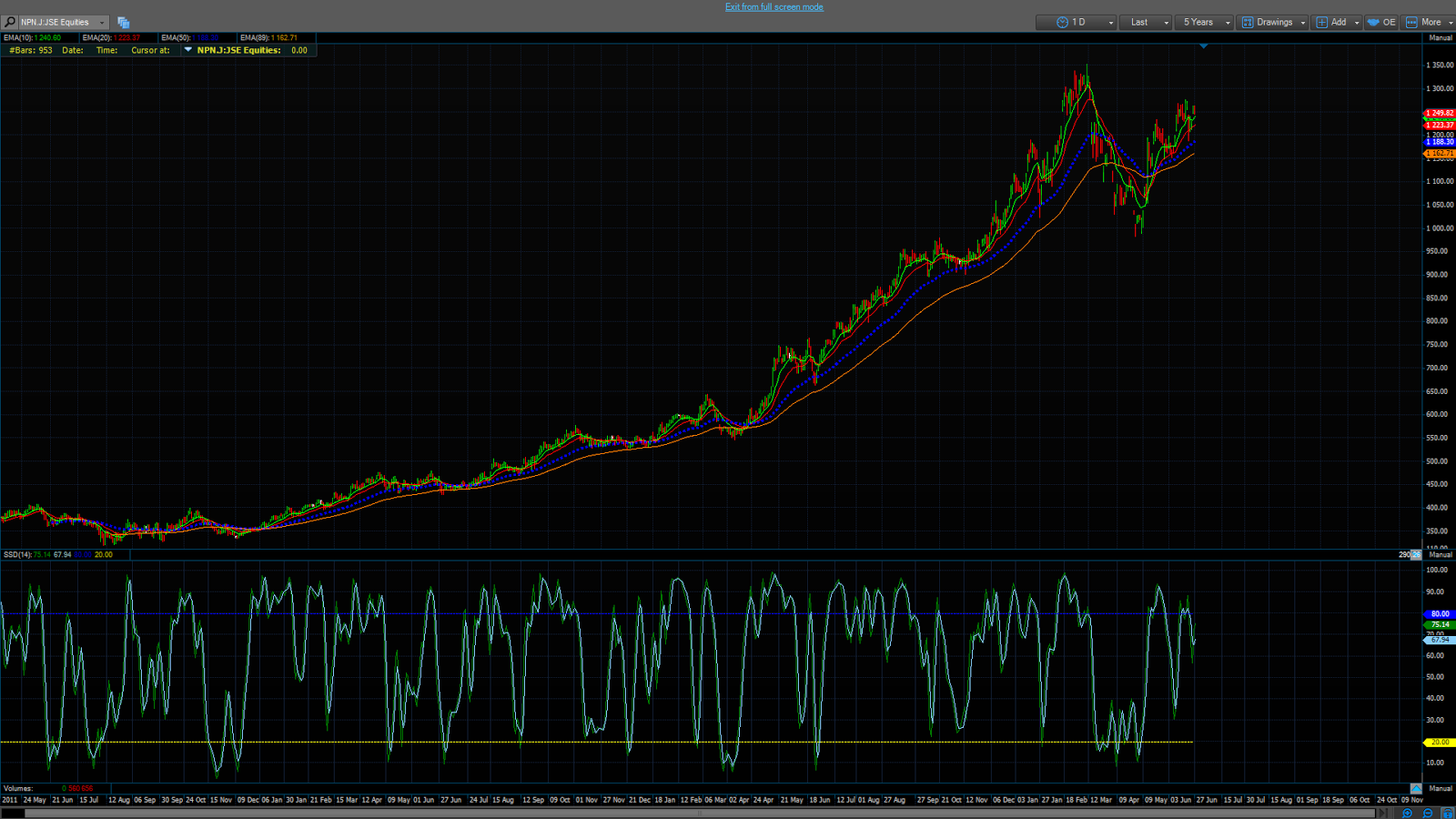Derivatives Trader. Street Dog. Market Student. All content on this blog is opinion only and is not to be taken as advice, nor an endorsement of any kind. --------> Please note that the blog has moved to https://herenya.co.za/blog/
Wednesday, 19 November 2014
Trying to learn from my mistakes
Saturday, 28 June 2014
Tulips, Bitcoins and Naspers
First, lets look at the past. We start with Tulips. I am sure everyone knows the story of Tulip Mania, so I will not go into detail regarding what happened.
The first chart looks are Bitcoins versus the .com bubble. The similarity in the charts should be evident.
Sunday, 23 March 2014
Massive Returns or Stable Growth?
Starting with the 2% rule.
Simply stated, the 2% rule is: Do not risk more than 2% of your capital in one trade. This is supposed to ensure that if you get it wrong and you are forced to stop out, you don't do too much damage to your account. What this rule does not mention is how many trades you can have open at any give time or how many times you are allowed to gear yourself (your portfolio).
So let's imagine that, like most new traders (not saying you're a new trader, just saying that there are a lot of newbie traders out there and hopefully this will help them - now the flow of this sentence is all wrong, so start it again and skip this part), you subscribe to the 2% rule and and you put on a few trades. Sticking to the 1:2 risk:reward ratio, it goes pretty well. You're risking 2% and banking 4%. Eventually you're sitting with 11 trades open, each risking 2%. Now, if all 11 trades go against you (let's say that you are only long) and the market has a week like it did last week, odds are that (in the worst case scenario) all your trades are now at their stop loss levels. Which means that you have just taken a 22% smack in a market that is down 5% or so. I have watched this happen in the past so I know it is possible, or rather, probable that it can and will happen to anyone. But that's not all... because what most people don't realise is that there are brokerage costs to include in your calculations, so what should be a 22% loss is closer to a 30% due to brokerage and slippage.
What the 2% rule does not account for is gearing. Mostly, the position size is calculated based on the entry price, stop loss level and amount (2%) that will be lost if the stop loss is hit. This leads the trader to believe that he/she is safe because they have predefined the risk and have a stop loss. What they don't realise is that they are not managing their exposure efficiently. And that is where I believe the problem lies.
1:2 risk:reward ratio
In theory there is nothing with this. The only problem I see here is that it will sometimes get you out of your trades too soon. Sometimes there is a 150% run for the year, as was the case with Coronation Fund Managers (CML) last year. Letting go of that big winner too soon is one of my biggest weaknesses and I am working on learning to hold onto winners longer.
We should be thinking in terms of exposure
The way I see it, and I could be wrong here of course, is that in order to survive the crashes and sustainably make profit, we need to think in terms of exposure. If you have R100k in your account, for fuck sakes don't go out and buy R700k worth of stock. It's stupid. Also, being long R300k and short R300k does not nett off to zero exposure... it's a R600k position and for a R100k account, it's too big.
So what about stability?
Well I guess that this is what it all comes down to: designing a system, or developing a method that you know will be able to survive a 50% market correction. Not only that, but a system that will leave you with enough free cash to be 'long the rocker' when the market is down there.
Wednesday, 19 March 2014
Planning, talking, negotiating
Sho, I can hardly believe how busy I've been over the last 2 days. It feels as if divine favour shines upon me. I have options, and all of them are good :)
I am a little frustrated that I'm not watching the market, but from what I hear and see from the corner of my eye, it's a good time to be sitting in a holiday chalet in Kommetjie and furiously planning the future - which I am :P
Yellen talks tonight at 20:00 and Futures Close Out tomorrow. Interesting times lay ahead.
>Peace and love!
Tuesday, 18 March 2014
Taking big steps
After over a week of talking, thinking, considering, weighing up options and more talking, I am sad to say that my relationship with Rock Capital has come to an end.
It is the beginning of a new journey for me. My quest to be the absolute best trader that I can be now leads me down a new and unexplored path.
Trading is a part of me. It is in my DNA. It is entwined with the very fabric of my being. My current focus is to align myself with a firm where trading, and the constant learning that comes with it, will be my primary care (more on this in due time).
Trade well out there.
Saturday, 15 March 2014
Guess it's time to wipe the dust off this thing
Alrighty, it's been a long time since I posted anything here. So long, in fact, that I have deleted all the old stuff and decided to start fresh.







.PNG)
